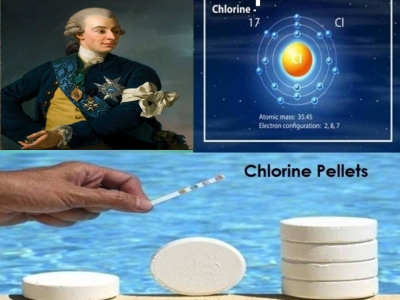
Chlorine is denoted by Cl and its atomic number is 17. Sodium chloride or salt is a very common compound of chlorine, which has been in use since ancient times. Evidence suggests that rock salt has been used as early as 3000 BC. In 900 AD, a Persian alchemist named Rhazes prepared hydrochloric acid, another compound of chlorine. In 1200 AD, a mixture of hydrochloric acid and nitric acid was used to dissolve gold. This process released chlorine gas, but it was not known at that time.
The first person to isolate chlorine gas was Carl Wilhelm Scheele, a Swedish chemist in the year 1774. As a result, he is credited for discovering chlorine. But he did not know that it was an element. It was only in 1810 that Sir Humphry Davy realized that Scheele had actually discovered a new element. Scheele, on the other hand, had studied its properties and discovered that it could kill insects, had a green yellow colour and that it bleaches litmus paper. Chlorine has many practical purposes in our life. It is used to purify water, to prepare disinfectants, in bleaches and in mustard gas. It is also used to manufacture many products directly or indirectly. For example, it is used in paper production industry, in making dyes, antiseptics, insecticides, paints, petroleum products, plastics, medicines, textiles, solvents and even some food items. It kills bacteria and microbes in the drinking water supplies. Chlorine is also used to bleach wood pulp for paper-making and to remove ink from recycled paper.
Picture Credit : Google




